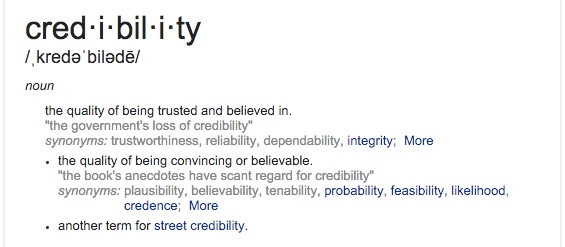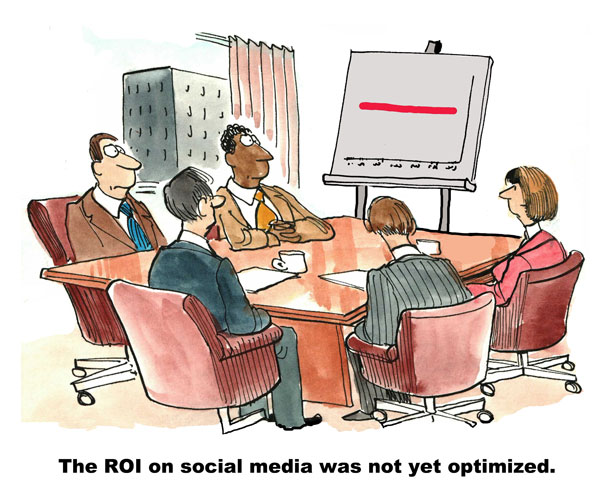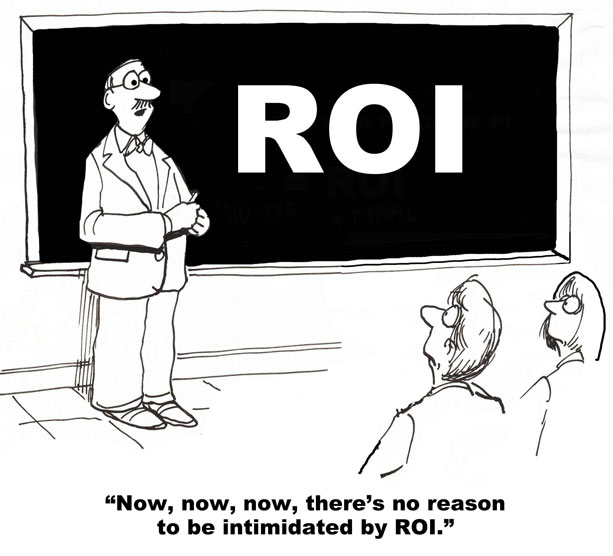
Does Marketing Have Credibility?
During this decade, Inbound Marketing has transformed how companies do business. The Inbound Marketing movement focuses on creating quality content that pulls potential customers to you. So what are the right marketing metrics to measure effectiveness? Why should you care? Let’s review a few statistics from The Fournaise Marketing Group:
“73% of CEOs think marketers lack business credibility and are not the business growth generators they should be.”
That finding is from a 2011 study involving interviews with 600 CEO’s and decision-markers. This study is outdated and Inbound Marketing has changed everything, right? Well, not so fast. Fournaise updated their results just last September and concluded:
“77% of marketers consider generating (incremental) awareness a critical way to prove effectiveness of their marketing”
It’s ok to seek awareness from your marketing, but you can’t afford to make that the goal. CEO’s and sales teams demand more. Instead your goal is to generate profitable revenue growth. ROI is a really good measure for that.
The Struggle With Marketing ROI
Although the Inbound Marketing movement has been around since 2006, marketers are still struggling to prove ROI. In the Fournaise study, marketers said awareness was the #1 way to prove ROI, followed closely by engagement (open rates, likes, tweets). “71% of Marketers believe that the next best way to prove effectiveness is [engagement].”
Marketers seem confused on this issue. Fournaise found that 86% of marketers believe engagement KPI’s prove they generated more business, despite no link to P&L related results and ROI. Don’t get me wrong. Engagement has value, but it’s not the same as converting leads. Engagement does not equate to customers and revenue.
Too Much Focus On The “How”
One final learning from the September 2015 report. 74% of marketers focus too much on “how” and not enough on “what” message. That means form and style are taking priority over substance. It also means marketers are neglecting value propositions, which negatively impacts customer demand.
Fluffy messaging without a clear value proposition is painful. It confuses customers and frustrates sales teams. Fix your value proposition first. Then worry about the “how” of your marketing efforts.
Is ROI Wrong For Marketing Metrics?
Questioning whether marketing ROI is the right metric? Daniel Kehrer wrote a Forbes article titled Why ROI Is Often Wrong For Measuring Marketing Impact. The article makes some great points.
- Marketers use the term ROI when often they mean something else (traffic, open rates, likes or tweets)
- ROI is a ratio and ratios are not what matter here. Net cash flows are what really matter.
- Marketing is complex. It requires big data analytics to truly understand impact.
These 3 points are right on, but this question is really best suited to Outbound Marketing. Outbound refers to things like branding, advertising and direct-mail. HubSpot says “Outbound [is] pushing a message out”.
ROI is not always the right metric for Outbound. Sure, digital marketing has refined our ability to track Outbound efforts like on-line advertising. However measuring the overall impact of Outbound Marketing is highly complex. It often requires big data, enterprise software platforms to get it right. That’s really Daniel’s point.
Inbound Marketing Metrics Focus On ROI
According to HubSpot, Inbound Marketing is “the best way to turn strangers into customers and promoters of your business.” Inbound focuses on creating quality content that pulls people toward your company and product. By attracting Inbound traffic, you can convert, close and delight the right customers.
ROI is essential for Inbound Marketing metrics. I’ll go into more detail about these sales funnel metrics in a future post, but the basic idea is this: measure the return from your marketing spend. What did it cost to acquire your customers? How much did you spend to move them through the sales funnel? How much will those customers return on your investment?
Agree On A Definition Of Marketing ROI
The formal calculation of ROI is: (Gain – Cost) / Cost (of Investment)
It’s typically shown as a %, but just like profit or gross margin ROI can also be cited as a dollar amount. For example, you gained $x by investing $y, so your return was $z.
Business leaders often say “ROI” when what they really mean is impact. To ensure credibility, it’s best to stay as close to the formal definition as possible. It’s important to agree with key stakeholders what ROI means to you. Otherwise you’ll be speaking a different language and dysfunction will follow.
Use Marketing Metrics To Gain Credibility
Of course, marketing impact goes beyond just ROI. That doesn’t mean you can ignore it. To achieve credibility with your CEO and sales teams, use marketing metrics that matter. Measure the effectiveness of Inbound Marketing with a mutually agreed definition of ROI.
Then take the next steps. Integrate sales and marketing for results. Define metrics to clearly track how customers move through the sales funnel. Create lots of visibility and over-communicate. Focus your marketing metrics on ROI to gain credibility.
